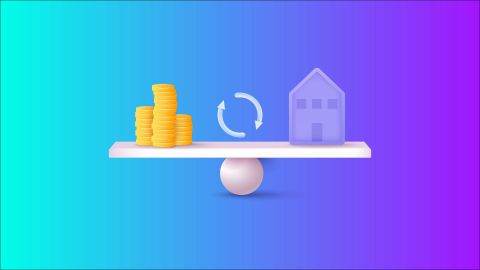Owning a home involves financial considerations, tax implications, and strategic decision-making. In this article, you can understand the relationship between House Rent Allowance (HRA), home loans, and tax-saving strategies for homebuyers.
Understanding HRA and home loan
House Rent Allowance (HRA) is a component of the salary provided by employers to employees to cover their rental accommodation expenses. This allowance comes with tax benefits, making it a crucial element for those renting homes.
Calculating HRA exemptions
- Eligibility criteria: Understanding the criteria that determine HRA exemptions under Section 10(13A) of the Income Tax Act.
- Calculation formula: Delving into the calculation of exempted HRA amount based on salary components and rent paid.
Home loan serves as a crucial financial tool for individuals looking to purchase a property.
Tax benefits of home loans
- Section 24(b): Exploring the deduction on interest payments up to Rs. 2 lakh annually for a self-occupied property.
- Section 80C: Understanding the deduction on principal repayments, including registration and stamp duty charges, up to Rs. 1.5 lakh.
The interplay between HRA and home loan
1. Claiming HRA and repaying a home loan:
- It is common for individuals to simultaneously avail HRA benefits and repay a home loan. While HRA provides tax benefits for renters, the principal and interest components of the home loan offer their set of tax advantages.
2. Tax benefits of HRA:
- Employees living in rented accommodations can claim HRA exemptions under Section 10(13A) of the Income Tax Act. The amount exempted is the lowest of the following: actual HRA received, 50% of the basic salary for those living in metro cities, or 40% for non-metro cities, and rent is paid minus 10% of salary.
3. Tax benefits of home loan:
Home loan repayments offer tax benefits under different sections:
- Section 24(b): Deduction on interest payments up to Rs. 2 lakh annually for a self-occupied property.
- Section 80C: Deduction on principal repayments, including registration and stamp duty charges, up to Rs. 1.5 lakh.
4. Dual benefits for first-time home buyers:
- First-time home buyers can enjoy additional benefits. Under Section 80EEA, an additional deduction of Rs. 1.5 lakh on interest payments is available, subject to certain conditions.
5. Impact on loan eligibility:
- Lenders consider HRA as a component of income when assessing home loan eligibility. However, the loan amount is primarily determined by the borrower's repayment capacity.
6. Renting out owned property:
- Some individuals opt to rent out their owned property for additional income. In such cases, tax implications and considerations related to HRA and home loans become more complex.
Factors to consider
- Financial goals: Align HRA and home loan decisions with your financial goals. Assess whether renting or owning aligns better with your long-term objectives.
- Tax planning: Carefully plan your taxes by maximising benefits from both HRA and home loan tax deductions. This requires a thorough understanding of the applicable sections of the Income Tax Act.
- Loan repayment capacity: Evaluate your repayment capacity before opting for a home loan. Consider factors such as current and future income, existing financial obligations, and lifestyle.
- Market conditions: Keep an eye on real estate market conditions. Factors like property appreciation and rental yields can influence the decision to rent or buy.
In the intricate tapestry of HRA and home loans, Indian home buyers must navigate wisely to maximise financial benefits and align with their life goals. Understanding the tax implications, assessing individual repayment capacities, and keeping an eye on market dynamics are essential elements in making informed decisions. By striking the right balance between HRA and home loans, individuals can secure a home that suits their lifestyle while optimising financial advantages in the process.




